Alzheimer’s disease, the most common form of dementia, is a progressive, terminal brain disorder that has no known cause or cure. It affects people’s memories, but it involves far more than simple forgetfulness. It is still not known why Alzheimer’s disease affects some people and not others. Researchers worldwide are searching for its causes and ways to prevent, diagnose, treat, and cure it. Learn about the signs and symptoms of Alzheimer’s, treatments, prevention techniques, and ways to care for yourself or a loved one.
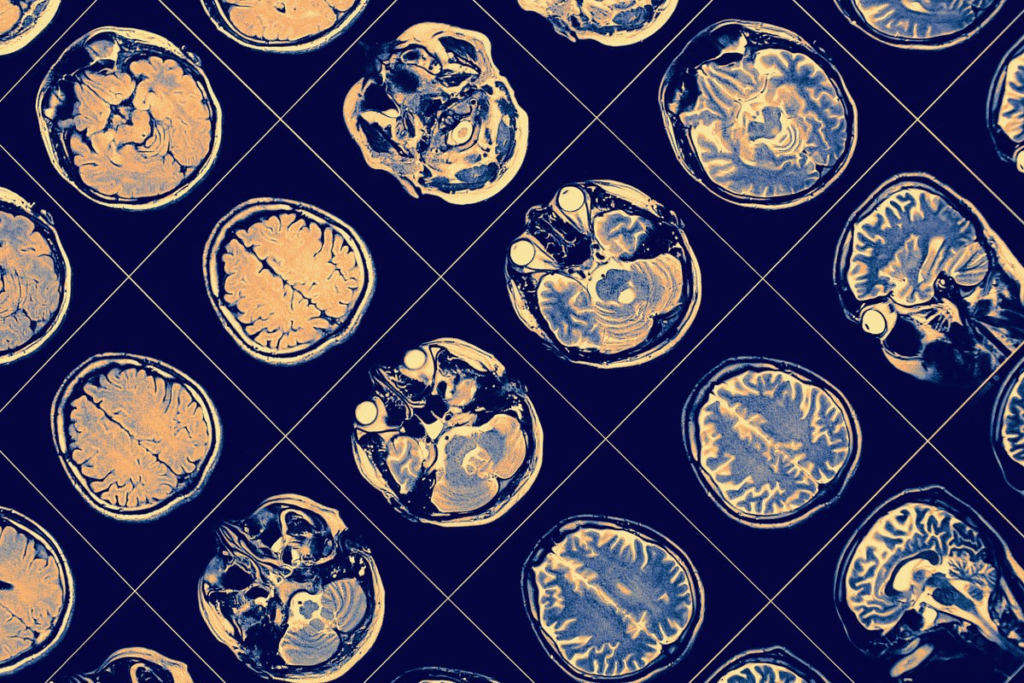
Understanding Alzheimer’s Disease

Alzheimer’s steals the minds of its victims.
It takes a toll on families who provide the majority of caregiving. About 7 out of 10 people with Alzheimer’s or other dementias are cared for at home. Caregiving can be difficult—family and other unpaid caregivers may experience high levels of emotional stress and depression.
Indicators
Signs & Symptoms
Many people experience mild forgetfulness or memory delays, which are part of the normal aging process. We all have occasional difficulty remembering a word or someone’s name. Someone with Alzheimer’s or other types of dementia, however, will find such symptoms becoming more frequent and severe.
Memory loss
Any of us could forget where we placed our car keys. Someone with Alzheimer’s disease may place the keys in an unusual spot, like the refrigerator.
Confusion
Cognitive problems
Inability to care for oneself

Neurodegeneration
How Alzheimer’s Affects The Brain
Alzheimer’s Disease Shrinks the Brain
Alzheimer’s damages brain cells, ultimately resulting in their death. This causes the brain to progressively shrink, as seen above when comparing a normal brain (left) with an Alzheimer’s brain (right).
Reduced Blood Flow and Brain Activity
PET scans showing metabolic activity of a normal (left) versus an Alzheimer’s (right) brain. The colors show an activity heatmap from low (blue/black) to high (red/yellow). The Alzheimer’s brain has reduced function and blood flow.
Alzheimer’s Brains Struggle to Remove Waste
Ventricles (red/yellow) are cavities filled with a fluid that flows throughout and around the brain to remove waste. Alzheimer’s impairs this process, allowing toxic proteins to build up.
Amyloid-Beta Plaques and Tau Tangles: Alzheimer’s Hallmarks
In Alzheimer’s disease, tau tangles (orange) build up inside brain cells called neurons, while amyloid-beta plaques (blue) accumulate in the surrounding area.
Chronic Brain Inflammation in Alzheimer’s Disease
In a healthy brain, microglia (blue) protect neurons (green) and astrocytes (red) destroy waste. In Alzheimer’s, however, both perpetuate harmful inflammation.
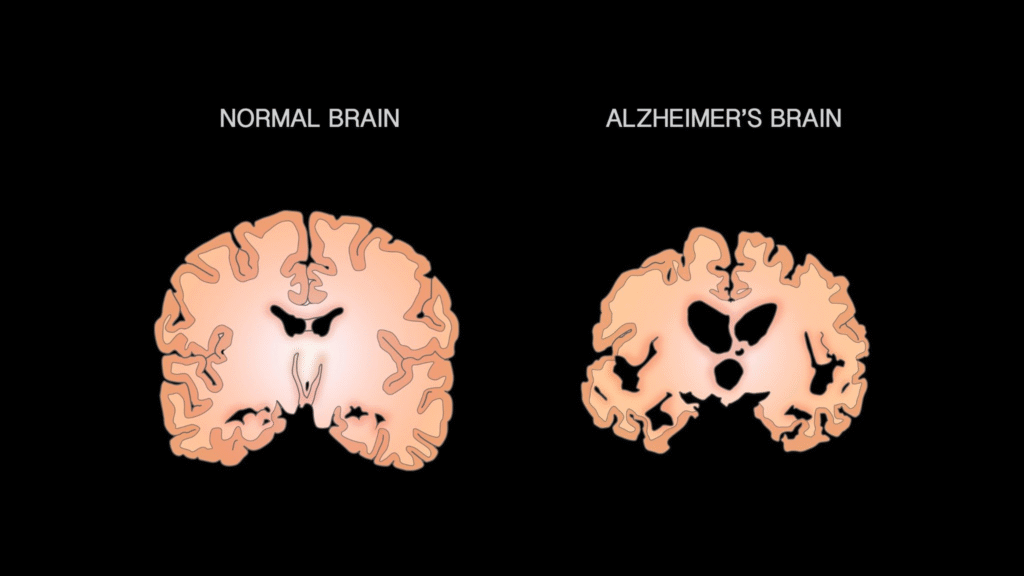
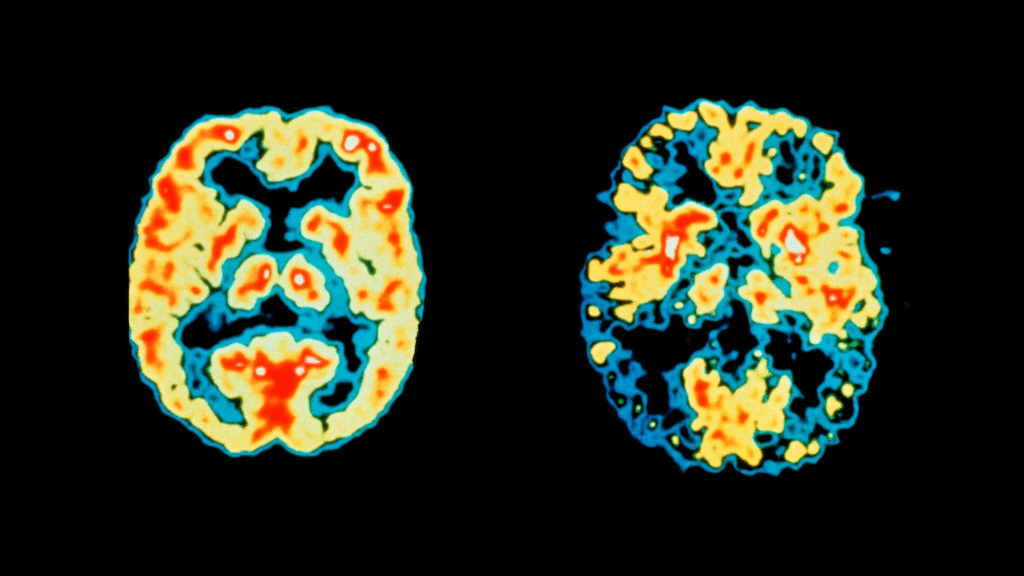
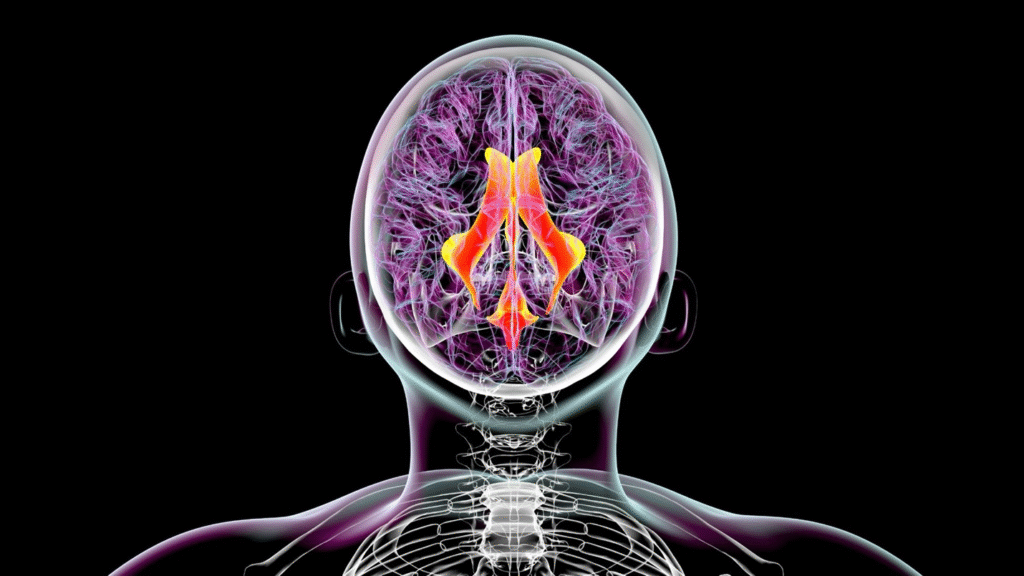
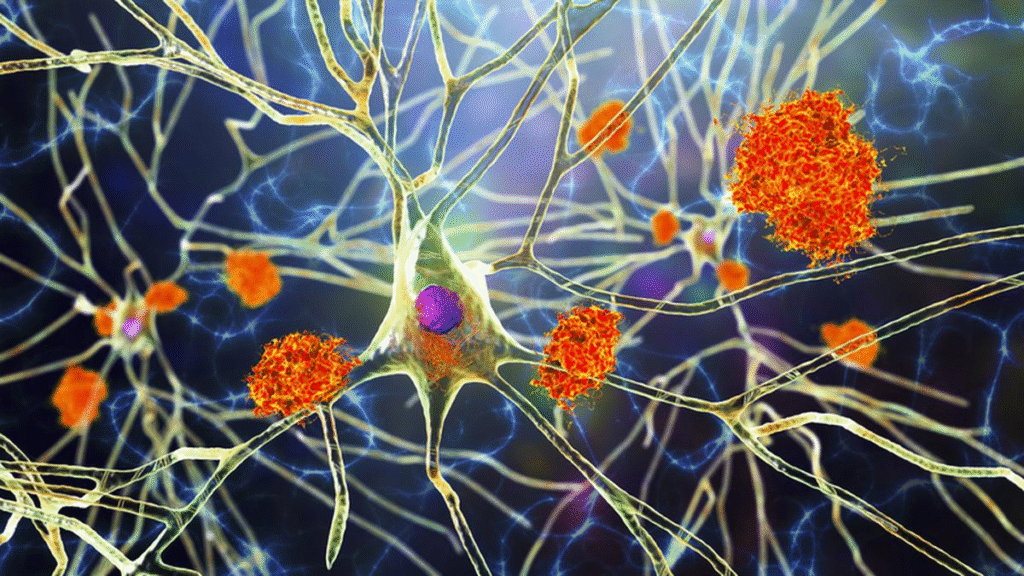
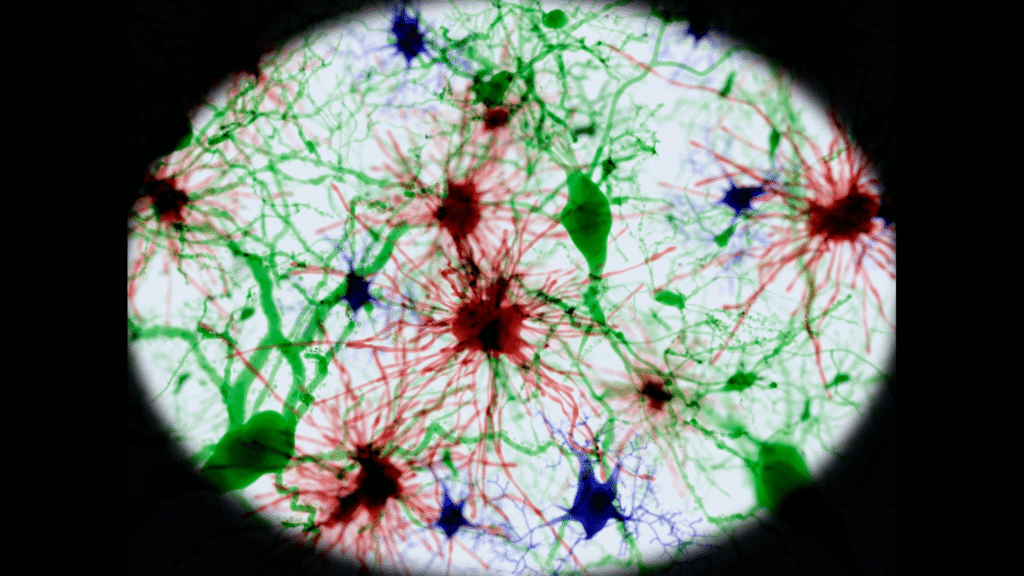
Risks & Prevention
Who is at Risk of Developing Alzheimer’s?

While there are many theories about what causes this disease, there is still no definitive answer.
However, there are some general risk factors to keep in mind, including:
- Diminished blood flow
- Excess accumulation of abnormal brain proteins
- Toxins
- Brain injury
- Infection
- Inflammation
- Malnutrition
Browse other potential risk factors and how to lower your risk.
By The Numbers
Facts & Figures

Nearly 7 Million
Americans age 65 and older are living with Alzheimer’s disease.

1 in 3
seniors die with Alzheimer’s or another dementia.

13 Million
people aged 65 and older are projected to have Alzheimer’s and other dementias by 2050 unless scientists develop new approaches to prevent or cure it.
Program Impact
The need for a cure is more urgent than ever.
Unless scientists can unlock the secrets of this disease, the number of cases is expected to triple by the year 2050. This epidemic could overwhelm our healthcare system.
Schedule some time to discuss your situation. Click the button below!
Schedule Your Onlline Discussion Appointment NOW!

- Nick Chambers
- 931-291-6934
- nick@ltcplanningconcepts.com
